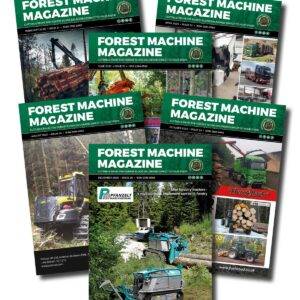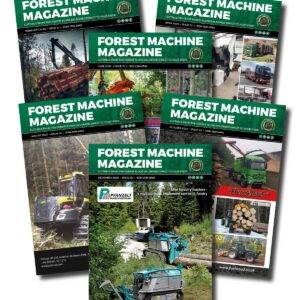Singer-songwriter Carole King’s opinion piece in The New York Times, “It Costs Nothing to Leave Our Trees as They Are” elevated a national and international conversation about the health of forests, logging, deforestation, and climate change. At the heart of King’s essay was her call for legislation to ban commercial logging on public lands.
The Forest School’s Mark Bradford, professor of soils and ecosystem ecology and Joseph Orefice, lecturer and director of forest and agriculture operations at Yale Forests, weigh in on what constitutes a healthy forest in this region; what role healthy forests play in climate change mitigation; and how to protect and maintain Northeastern forests in the face of climate change, pests, pathogens, and forest degradation.
Bradford researches how soil carbon cycling relates to forest ecology. Orefice ’09 MF teaches courses in agroforestry and forest management and oversees forestry operations and applied educational opportunities on the 10,880-acre Yale Forests.
Q: What constitutes a healthy forest and what role do individual trees play?
Bradford: People love trees. They love individual trees…There’s a feeling that they’re somewhat sentient and they have longevity so we form an attachment to them. But forestry is never about cutting an individual tree. Just like thinning young carrots in your garden so that the remaining carrots grow well, when we cut trees as part of sound forest management it is not a cause of deforestation nor degradation, but about the collective health of all the trees in the woods. Yet, there is a growing environmental and political movement that falsely asserts, ‘cutting any forest is bad,’ whereas in New England, for example, having the option to cut trees is necessary if we are to protect many of our public and private forests.
Orefice: Cutting trees, when done in appropriate ways, can lead to a more resilient forest while yielding renewable forest products. For us to be able to manage the forest, for us to make trees grow better, we actually need to remove some trees. As trees grow, they need more space and their competition for light resources increases. By cutting one tree, we can give another tree more room to grow and increase its health. Often foresters prescribe cutting trees because the result of harvesting forest products will meet multiple objectives, such as improving habitat, reducing fire risk, and/or increasing tree species diversity through regeneration.
Q: How does logging and cutting down trees for timber products impact climate change?
Orefice: Logging and land clearing are different. Land clearing is extraction to make room for a parking lot or housing development and that is not climate friendly. Logging, on the other hand, is an important part of forest management. When a tree dies from logging or on its own, that tree is no longer going to be sequestering carbon, and the carbon from that tree is eventually going to go back into the atmosphere. But carbon coming from trees is not the same as the carbon coming from fossil fuels. The carbon from trees is cycled at the surface level through the regrowth of a forest. So, cutting a tree certainly will release carbon, but it also will be giving that area of the forest space for new trees to sequester more carbon.
-
That’s a remarkable amount of work hours for a single machine, the Norcar 600 owned by Erkki Rinne is taken well care of, it even has the original Diesel engine.
-
Kieran Anders is a forestry contractor working in the lake district. His work involves hand cutting and extracting timber using a skidder and tractor-trailer forwarder.
-
It is not possible to eliminate chain shot, but there are simple steps that can be taken to reduce the risk.
-
Arwel takes great pride in the fact that the mill has no waste whatsoever, “the peelings are used for children’s playgrounds, gardens and for farm animals in barns in the winter and the sawdust has multiple uses in gardens and farms as well.
-
Timber hauliers need to encourage young blood in, and also look after the hauliers we have, we need make the sector a safe and positive place to work.
FIND US ON
Related Posts
Forests also play a critical role in what should be our top priority — transitioning from fossil fuels to renewable products. We have a real need for resources that trees provide in the form of wood. Wood is the most sustainable construction product we have. The common alternatives that we have to wood are steel, concrete, and plastics, all of which are incredibly fossil fuel intensive. In contrast, wood can be grown in a very sustainable, renewable way that supports natural ecosystems. Forest management can be part of our climate change mitigation and adaption strategy because of the increased resiliency and the carbon benefits of forest products.
Bradford: We are moving away from equating the maximum amounts of carbon on the landscape as equivalent to a healthy forest. Effective forest management means optimizing the amount of carbon that you have on the landscape. The goal is to have healthy forests that provide timber and non-timber-based forest products. Sustainable logging, for example, across New England landscapes creates patches within forest land with trees less than 20 years old. The management typically simulates ecological processes to promote natural regeneration of a diverse mix of native tree species. These young trees are much less susceptible to storm damage, and the regeneration provides food and habitat for wildlife and allows for the rapid accumulation of carbon. By removing some carbon from the landscape in the form of mature trees, we keep more carbon in our forests and out of the atmosphere in the longer-term.
Q. What would happen if forests were completely left alone?
Bradford: The argument for removing forest management entirely from our nation’s forests ignores the strong science around how you manage for healthy, resilient forests. For example, our New England forests have been managed by people for thousands of years and more recent actions have left many of our forests in a degraded state. If you ban forest management now, you will reinforce a cycle of decreasing forest health as less desirable tree species become ever-more dominant in even-aged, mature forests that have a low ability to recover from the growing intensity of pest, pathogen, and climate disturbances. Admittedly, these lands might still look like a forest in that you have mature trees with closed canopies. But they lack vigorously growing, younger individuals of desirable species, such as red oak, which are of high value for timber, wildlife, and carbon storage. The false narrative in New England that ‘nature will fix itself’ ignores the current state of many of our forests and the critical role that sound forest management plays in restoring and sustaining forest lands and the livelihoods of those that depend on them.
Orefice: Periodic major disturbances, such as insect outbreaks, new invasive species, hurricanes, and fires will occur whether we manage our forests or not. Forest management helps us create a balance of species, biodiversity, forest regeneration, and age classes across a landscape. This heterogeneity provides forest ecosystems with the ability to recover from disturbances faster and in a way that continues to meet the needs of people. Ultimately, people need forests more than forests need people, and forest management can provide some consistency today while ensuring resource options for future generations.
Forest Machine Magazine is written and edited by a forest professional with over 40 years hands on experience. We are dedicated to keeping you informed with all the latest news, views and reviews from our industry.
To support us you can subscribe to our bi-monthly magazine which is delivered to your door from only £30 per year.
Subscribe here
#homeoflogging #writtenbyloggersforloggers #loggingallovertheworld
-

 1 Year Subscription£0.00
1 Year Subscription£0.00 -

 2 Year Subscription£0.00
2 Year Subscription£0.00 -

 Issue 37£6.00
Issue 37£6.00 -

 Sustainable Logging: Powering The Planet T-Shirt£17.50 – £20.00
Sustainable Logging: Powering The Planet T-Shirt£17.50 – £20.00 -

 Sustainable Logging: Powering The Planet Hoodie£33.00 – £36.00
Sustainable Logging: Powering The Planet Hoodie£33.00 – £36.00

